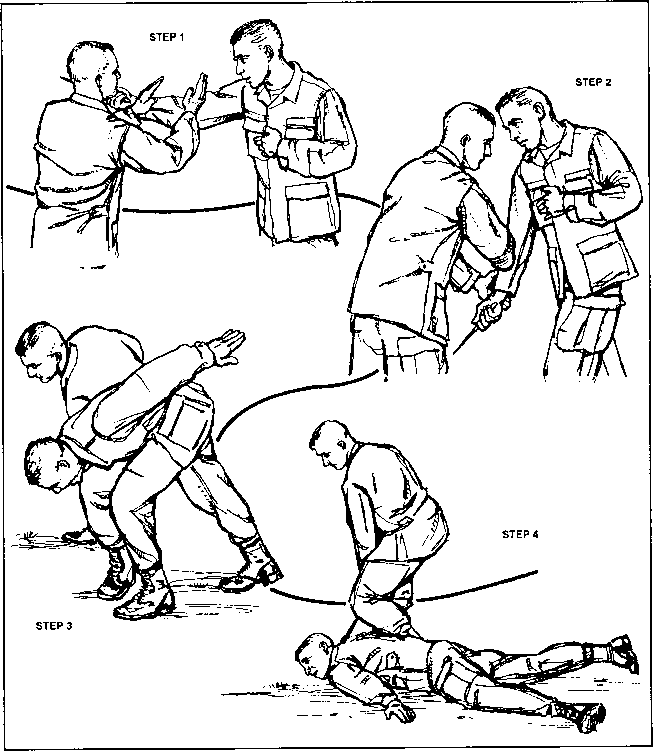Getting Trained with Brass Knuckles - Boost Your Self Defense Skills
Posted by Swordsswords on Feb 2nd 2024
Facing danger head-on? Brass knuckles may seem like a quick fix, but are they the right answer?
These metal fist enhancers promise amplified punching power for self defense , but wielding them comes with hefty baggage. Legality varies like a chameleon, and their bite can land you in deeper trouble than the threat itself.
But wait! Before writing them off, consider this: under the right guidance and within the law's boundaries, brass knuckle can offer unique self defense advantages. However, responsible use is paramount.
Join us as we delve into the world of brass knuckle, exploring their potential benefits, legal hurdles, and responsible training options. After all, knowledge is your ultimate weapon in any situation.

Self Defense with Brass Knuckles: Where It's Legal and Who Should Opt For It?
First thing’s first. When you’re thinking about training with knuckle, legality issues can’t be ignored. And it's a bit of a mixed bag across states. Places like Texas, Arizona, and Indiana are a bit more chill about it. If you find yourself in a state where real Brass Knuckle are on the legal side, learning how to use them is like having a superpower.
Now, who's this training for? Well, anyone prioritizing their safety really. Maybe you're a night owl walking home alone or just someone who wants that extra layer of protection, brass knuckles for sale on Swordsswords.com are a solid choice. Made of 100% pure brass, they can fit snugly on your fingers and come in many different designs.
Granted they won’t turn you into a superhero; but you’ll be more street-smart and feel confident to handle yourself out there in the big bad world!
While the use of brass knuckles may vary in legality across different jurisdictions, it's important to prioritize responsible and legal practices. If you are in an area where their use is permitted, here are some basic self defense techniques using brass knuckles:
Basic Self Defense Techniques Using Real Brass Knuckle
1. Proper Grip and Stance:
- Hold the brass knuckles securely in your hand with your fingers through the holes, ensuring a firm grip.
- Adopt a balanced and stable stance, distributing your weight evenly on both feet.
2. Straight Punch:
- Aim for the center of mass (torso) and extend your arm, using the added force provided by the brass knuckles.
3. Hook Punch:
To throw a hook punch, follow these steps:
- Start in a good fighting stance with your feet shoulder-width apart and your dominant side back.
- Keep your non-dominant hand up to protect your face and use your dominant hand to throw the hook.
- Pivot on the ball of your lead foot and rotate your hips and shoulders in the direction of your punch.
- Keep your elbow bent at a 90-degree angle and aim to strike your target with the belt buckle of your hand.
- After making contact, quickly retract your arm to protect yourself and be ready for the next move.
4. Uppercut:
To throw an uppercut, follow these steps:
- Stand in a balanced and athletic stance: Position your feet shoulder-width apart with one foot slightly in front of the other. Bend your knees slightly and keep your weight evenly distributed.
- Guard your face: Keep your non-dominant hand (if you're right-handed, it's your left hand) close to your face to protect yourself. Your dominant hand (right hand for right-handed individuals) will be used to throw the uppercut.
- Generate power from your legs and hips: The power in an uppercut comes from the lower body. Bend your knees slightly more and get ready to explode upwards
- Shift your weight to your rear foot: As you prepare to throw the uppercut, transfer your weight to your rear foot. This will help generate power and stability.
- Rotate your hips and torso: Initiate the uppercut by rotating your hips and torso in the direction of your punch. This will add more power to your strike.
- Chamber your dominant hand: Bring your dominant hand close to your body, keeping your elbow bent and close to your ribs. This position prepares you for the upward motion of the uppercut.
- Explode upward with your punch: Extend your legs and drive upward, simultaneously rotating your hips and torso. As you do this, release your dominant hand in a controlled and explosive manner. Imagine punching upward through your target's chin or body.
- Follow through and retract: After making contact, follow through with your uppercut by extending your arm fully. Then, quickly retract your arm back to the guard position to protect yourself.
5. Defensive Maneuvers:
- Use the brass knuckles to block and parry incoming attacks, protecting yourself while creating openings for counter-attacks.
6. Escape and Evasion:
- When faced with a threatening situation, prioritize escaping rather than engaging unnecessarily. Knuckle dusters can be a deterrent, but a safe retreat is often the best strategy.
Remember, proper training is crucial to ensure effective and responsible use of brass knuckles. Seek guidance from certified self defense instructors, and always be aware of the legal implications in your area. Responsible and ethical use is key to utilizing these tools for personal safety.
Advanced Techniques with Brass Knuckles
1. Precision Strikes:
Mastering precision strikes with brass knuckles involves honing the ability to target specific vulnerable areas, such as the eyes, throat, or solar plexus. By channeling the force of the knuckles with accuracy, these strikes maximize impact and create opportunities for effective self defense.
2. Combination Strikes:
Advanced practitioners seamlessly integrate a series of punches and strikes, overwhelming opponents through a well-coordinated sequence. Brass knuckles, with their enhanced striking power, allow for rapid and powerful combinations that keep assailants off balance and unable to mount an effective defense.
3. Counter-Attacks:
Skilled practitioners leverage the defensive capabilities of brass knuckles to deflect incoming attacks while simultaneously launching counter-attacks, turning the tables in their favor.
4. Joint Manipulation:
Mastery in joint manipulation involves applying controlled pressure to an assailant's joints. The knuckle dusters become a tool for creating leverage, allowing practitioners to control and subdue opponents by exploiting weaknesses in their joints.
5. Ground Defense:
Advanced brass knuckles training extends to ground defense, equipping individuals with techniques to protect themselves effectively in close-quarters combat situations. This includes strategic use of the knuckle for striking while on the ground.
6. Weapon Retention:
Proficient users of brass knuckles understand the importance of weapon retention. Advanced techniques involve maintaining control over the brass knuckles, even when faced with an assailant armed with another weapon. This skill ensures that individuals can effectively defend themselves without compromising control over their own tool.
7. Disarming Techniques:

Advanced self defense with brass knuckles includes mastering disarming techniques. Practitioners learn to disarm opponents, utilizing the unique features of brass knuckles to create opportunities for control while neutralizing potential threats. This advanced skill set emphasizes the importance of quick thinking and precise movements.
8. Situational Awareness:
The pinnacle of brass knuckles training involves developing heightened situational awareness. Practitioners become adept at anticipating and responding to potential threats effectively. Brass knuckles serve as a tool of empowerment in these scenarios, allowing individuals to navigate diverse situations with confidence and strategic thinking.
Key Factors and Legal Considerations for Justifiable Use of Force
In the United States, self defense laws vary by state, and understanding when self defense is legally justifiable is crucial. Generally, self defense is acceptable when a person reasonably believes that force is necessary to protect themselves or others from imminent harm. Key factors influencing the legality of self defense include:
1. Imminent Threat:
- The threat must be immediate, with no reasonable opportunity to escape or seek help. The use of force is typically deemed acceptable if there is an imminent danger to life or safety.
2. Proportional Force:
- The level of force used in self defense should be proportional to the threat faced. Excessive force beyond what is necessary may lead to legal consequences.
3. Reasonable Belief:
- The person defending themselves must have a reasonable belief that force is necessary. This subjective belief is evaluated based on the circumstances known to the defender at the time.
4. No Duty to Retreat (Stand Your Ground)
- In some states, there is no obligation to retreat before using force if confronted with a threat. These "stand your ground" laws vary, so it's essential to be aware of the specific regulations in your jurisdiction.
5. Defense of Others:
- Self defense laws often extend to the protection of others, allowing individuals to use force if they reasonably believe someone else is facing an imminent threat.
6. Home Defense (Castle Doctrine):
- Many states have a "Castle Doctrine," allowing individuals to use force, including deadly force, to defend their home from intruders without the duty to retreat.
Also read: Budget-Friendly Blades: The Best Deals on High Quality Daggers
It's crucial to note that each state has unique statutes and interpretations of self defense laws. Seeking legal advice and understanding local regulations is essential for anyone interested in self defense. Additionally, responsible and ethical use of force is paramount to ensuring legal protection in self defense situations. Always prioritize de-escalation and avoidance when possible.
Get yourself a shiny pair of brass knuckles only from Swordsswords.com. We have a 4.2 shopper approved rating. Our knuckle duster comes with the option of laser-etching to make them truly unique to you!

